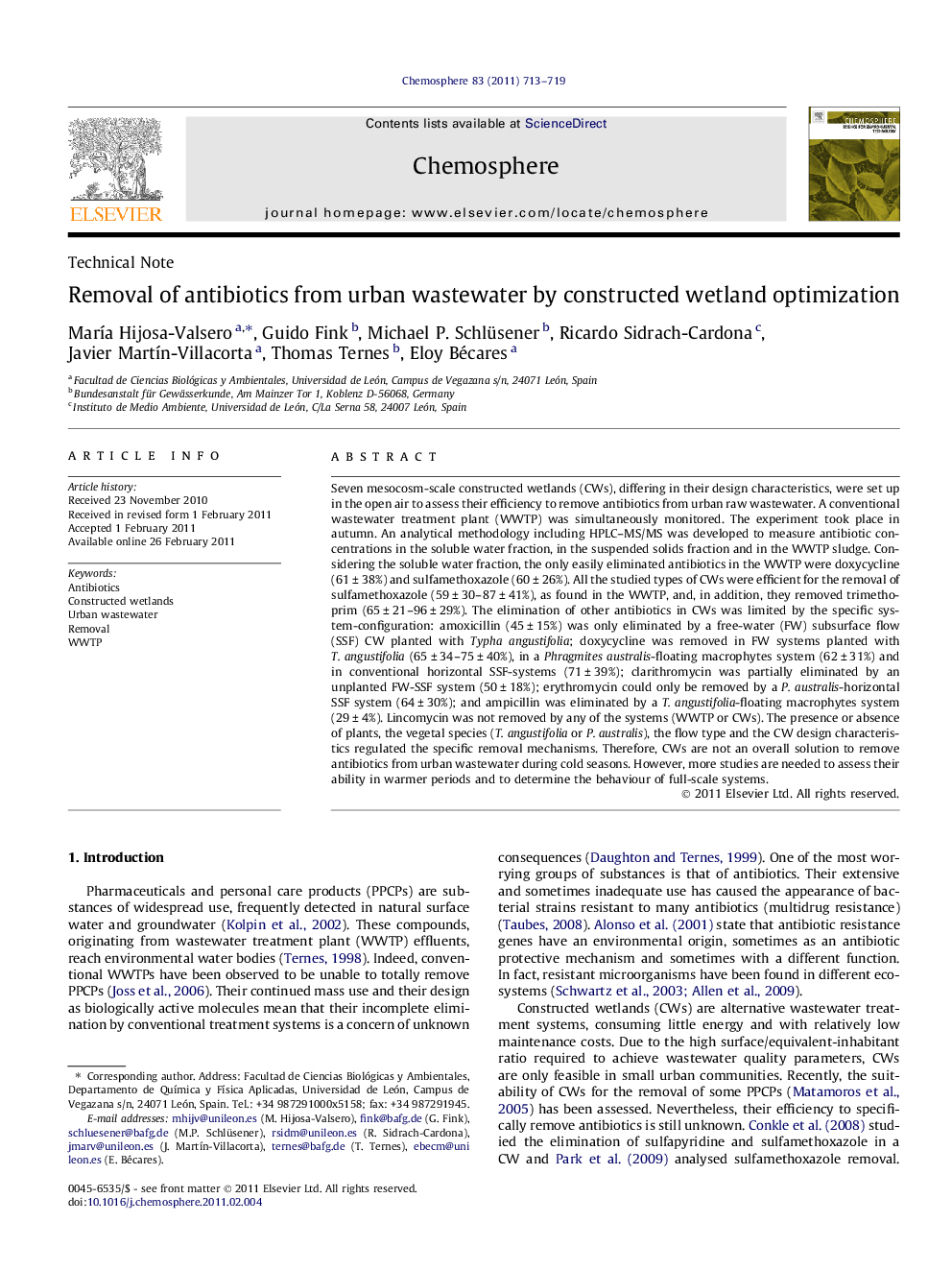| کد مقاله | کد نشریه | سال انتشار | مقاله انگلیسی | نسخه تمام متن |
|---|---|---|---|---|
| 4410849 | 1307566 | 2011 | 7 صفحه PDF | دانلود رایگان |

Seven mesocosm-scale constructed wetlands (CWs), differing in their design characteristics, were set up in the open air to assess their efficiency to remove antibiotics from urban raw wastewater. A conventional wastewater treatment plant (WWTP) was simultaneously monitored. The experiment took place in autumn. An analytical methodology including HPLC–MS/MS was developed to measure antibiotic concentrations in the soluble water fraction, in the suspended solids fraction and in the WWTP sludge. Considering the soluble water fraction, the only easily eliminated antibiotics in the WWTP were doxycycline (61 ± 38%) and sulfamethoxazole (60 ± 26%). All the studied types of CWs were efficient for the removal of sulfamethoxazole (59 ± 30–87 ± 41%), as found in the WWTP, and, in addition, they removed trimethoprim (65 ± 21–96 ± 29%). The elimination of other antibiotics in CWs was limited by the specific system-configuration: amoxicillin (45 ± 15%) was only eliminated by a free-water (FW) subsurface flow (SSF) CW planted with Typha angustifolia; doxycycline was removed in FW systems planted with T. angustifolia (65 ± 34–75 ± 40%), in a Phragmites australis-floating macrophytes system (62 ± 31%) and in conventional horizontal SSF-systems (71 ± 39%); clarithromycin was partially eliminated by an unplanted FW-SSF system (50 ± 18%); erythromycin could only be removed by a P. australis-horizontal SSF system (64 ± 30%); and ampicillin was eliminated by a T. angustifolia-floating macrophytes system (29 ± 4%). Lincomycin was not removed by any of the systems (WWTP or CWs). The presence or absence of plants, the vegetal species (T. angustifolia or P. australis), the flow type and the CW design characteristics regulated the specific removal mechanisms. Therefore, CWs are not an overall solution to remove antibiotics from urban wastewater during cold seasons. However, more studies are needed to assess their ability in warmer periods and to determine the behaviour of full-scale systems.
Research highlights
► Constructed wetlands can partially remove antibiotics from urban wastewater.
► Several constructed wetland design-configurations were assessed.
► Sulfamethoxazole and trimethoprim were removed by all the systems.
► The removal of other compounds was lower and depended on the design of the system.
Journal: Chemosphere - Volume 83, Issue 5, April 2011, Pages 713–719